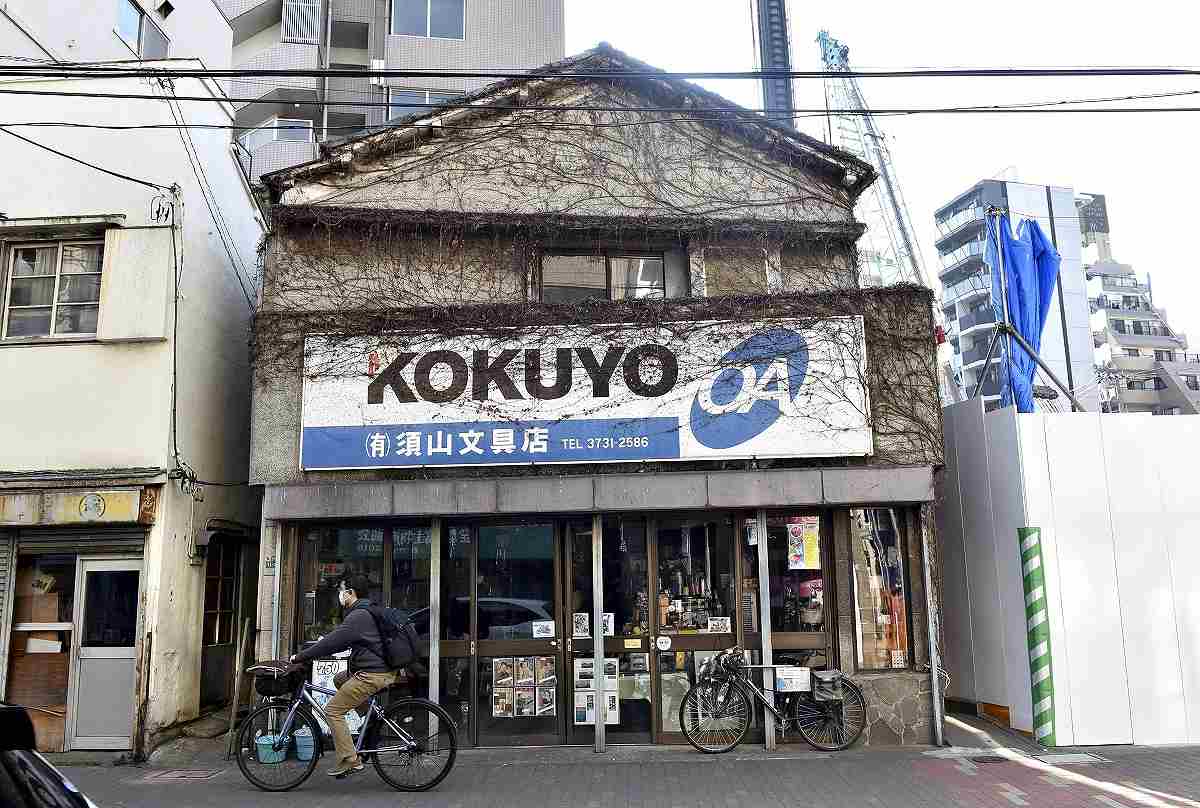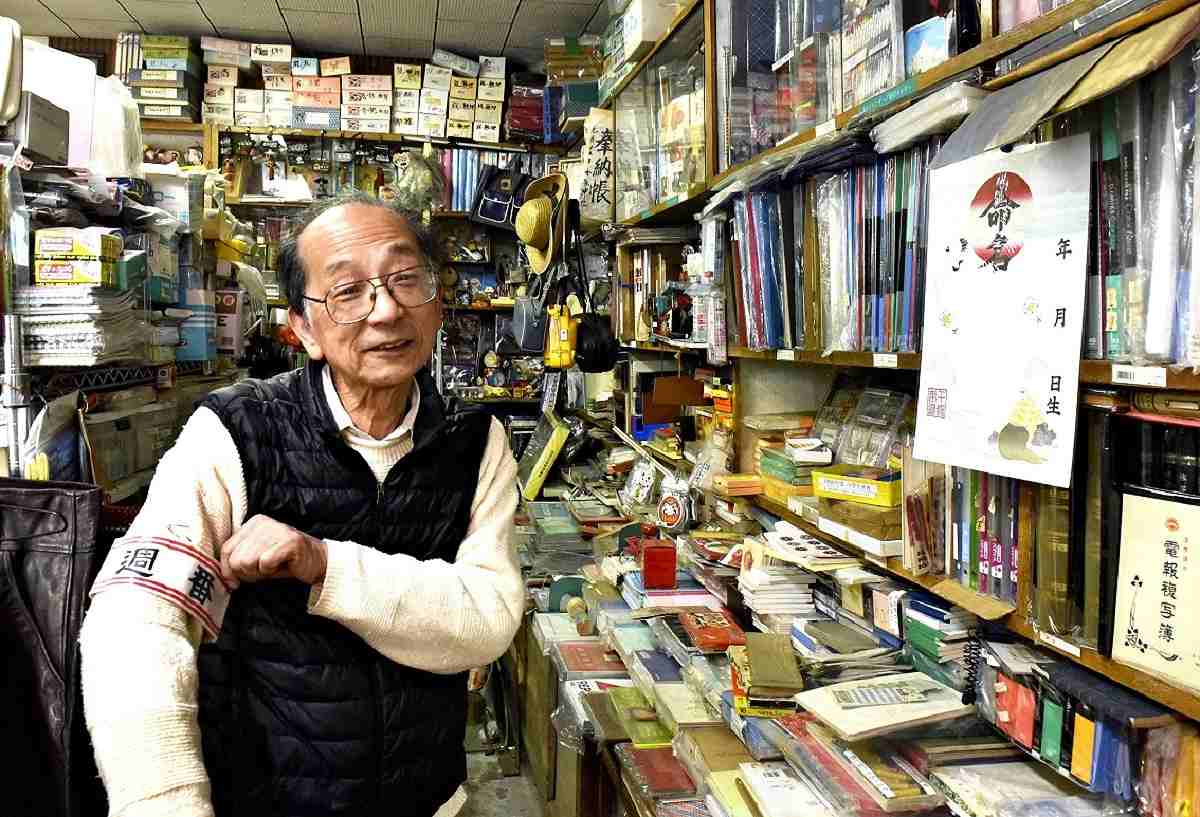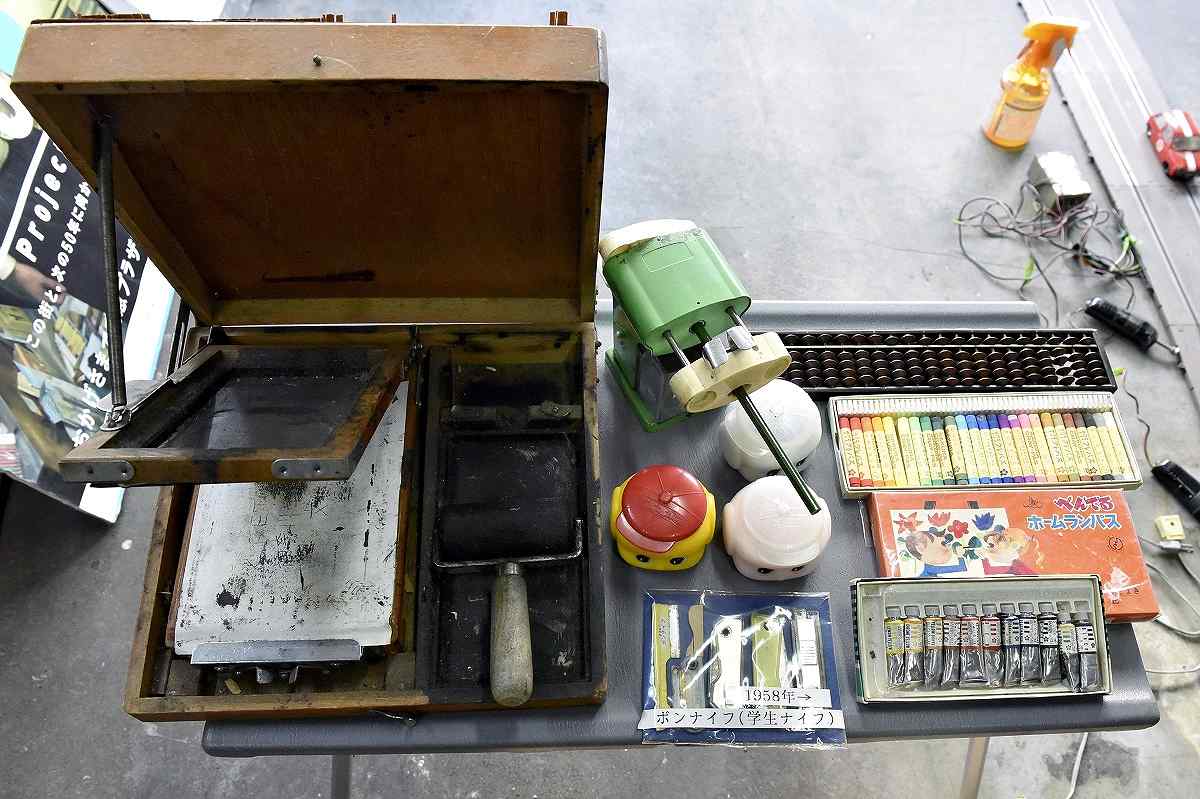Tokyo Retro Show Exhibits Stationery From Showa Era; Trendy Games and Figures Representing Children’s Dreams on Display

The impressive ivy-covered exterior of Suyama Bunboguten stationery store. It now serves both as a shop and a museum and is loved by local residents and others.
13:25 JST, March 25, 2024
As I was walking around the town of Kamata, which still retains the atmosphere of the Showa era (1926-1989), I came across an old building covered with ivy. Through the glass, I could see various things crammed inside. It appeared to be a stationery store. I wondered if it was open, so I took a chance and stepped inside.
Suyama Bunboguten, a stationery store in Ota Ward, Tokyo, has been around since just after the end of World War II. Even local residents were curious about the shop. There was a hand-cranked pencil sharpener among other piled-up old writing implements. According to store owner Toyohisa Suyama, 73, he received positive feedback when some of the old products he had in storage were put on display about six years ago. He responded to requests to put more of them on display. The building now serves as both a store and a museum.

The stationery shop’s owner, Toyohisa Suyama, wears an armband, which used to be used at schools.
The names of the products along with their year of manufacture are displayed near the exhibits. These items are generally not for sale, but many of them are still in a usable condition. Stationery lovers and Showa-era retro enthusiasts visit the store from all across the country, and there are even some foreign visitors.
When I asked Suyama which item he recommends, he told me about a fountain pen that was manufactured right after World War II. He went on to explain how rare it is.
There are also items that are no longer available, such as a mimeograph, or gari-ban in Japanese. School teachers would use it to make prints. At first glance, I had no idea what it was used for. Suyama also showed me a small knife and sharpened a pencil with it. The product appeared to be what is known as a “Bon-knife,” named after its manufacturer. “This is how children used to learn how to use a knife and the dangers of using them,” Suyama said.

Rare stationery such as a mimeograph, left, is on display.
Showa-era stationery stores were spaces filled with children’s dreams, selling trendy goods and toys. Items on display include old figures and games. Suyama’s personal collection includes slot cars that were popular in the 1960s and vinyl kites that were popular during the 1970s. He has fond memories of an astronomical telescope his father bought for him after he missed a chance to get one in a giveaway from a magazine.

Suyama operates slot cars.
“People are recognizing anew the good old days. I’d like to show content that visitors find interesting,” Suyama said.
***
Suyama Bunboguten
Address: 7-11-3 Nishi-Kamata, Ota Ward, Tokyo
Access: A 7-minute walk from the west exit of Kamata Station on the JR Keihin-Tohoku Line or a 4-minute walk from Hasunuma Station on the Tokyu-Ikegami Line
Hours: Open from 7 a.m. to 6 p.m.
Related Tags
"Features" POPULAR ARTICLE
-

Sanrio to Open Museum in Yamanashi Pref. Dedicated to Founder, Exhibits Include Hello Kitty, Other Characters
-

Autumn Foliage Surrounds Visitors to Tokyo’s Showa Kinen Park
-

My Daughter No Longer Speaks to Me, But I Want to See Her and My Grandchild
-

Kumamoto: Public Bath Refurbished as Library Where You Can Chat, Take Photos
-

Frozen Vegetables: Demand Rises for Convenient, Tasty Domestic Produce
JN ACCESS RANKING
-

Tokyo Economic Security Forum to Hold Inaugural Meeting Amid Tense Global Environment
-

Keidanren Chairman Yoshinobu Tsutsui Visits Kashiwazaki-Kariwa Nuclear Power Plant; Inspects New Emergency Safety System
-

Imports of Rare Earths from China Facing Delays, May Be Caused by Deterioration of Japan-China Relations
-

University of Tokyo Professor Discusses Japanese Economic Security in Interview Ahead of Forum
-

Japan Pulls out of Vietnam Nuclear Project, Complicating Hanoi’s Power Plans

























